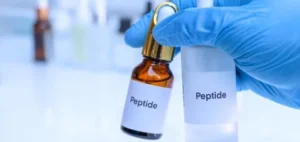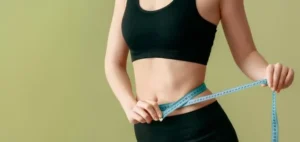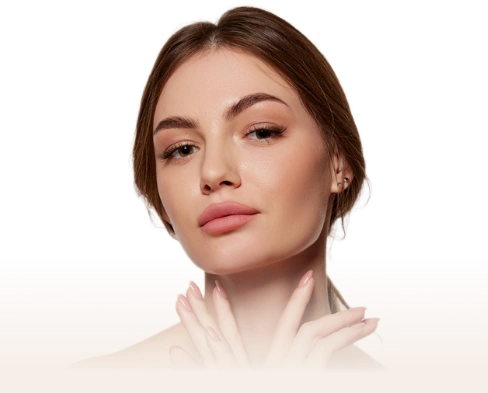Each treatment has its strengths, and this one has a little more to offer – so here is everything you need to know about what is PRP with micro-needling.
PRP is particularly effective at successfully reducing and to an extent removing the wrinkles and fine lines that aging brings along with it – As it boosts collagen, skin elasticity, and hair growth.
In contrast, micro-needling also increases collagen and skin elasticity but is more commonly used to treat acne scars and enhance/correct skin texture since it is a topical procedure.
What Is Microneedling?
Micro-needling is a cosmetic procedure that involves sticking tiny, sterile needles into the skin. Your body naturally produces more collagen and elastin due to healing initiated by those minor injuries, which helps your skin to get repaired into a new version of skin and makes you appear youthful. It is also referred to as collagen induction therapy.
What Is PRP i.e Platelet-Ric Plasma?
Platelet-rich plasma (PRP) consists of two main components: i) Platelets – a type of blood cell crucial for overall bodily repair; and ii) Plasma – the liquid portion of blood. In addition to their well-known clotting properties, platelets also contain growth factors that can promote cell proliferation, encourage tissue regeneration, and pierce up the treated area’s healing process. Platelet-rich plasma is explained to be the type of blood that has much more platelets than usual.
Making platelet-rich plasma involves acquiring a blood sample from the patient and spinning it at high-speed in a centrifuge, which concentrates the platelets within the plasma and separates all the other components in the blood.
What Is PRP With Microneedling?
By depositing platelets, one of the components of blood, and pricking the skin over the area that needs to be treated using tiny needle; micro-needling with PRP is a cosmetic procedure that promotes the natural production of collagen.
Micro-needling might be more effective if PRP from the blood is added to the treatment. Plasma is a liquid in blood, whereas platelets are solid components. Platelets are crucial for healing wounds and injuries because they aid in blood clotting. PRP is plasma with a higher concentration of platelets than other blood constituents.
PRP Microneedling Procedure
Everything from age spots and wrinkles to scars and types of hyperpigmentation are treated using the traditional micro-needling process. PRP might intensify these effects and speed up the delivery of the expected and desired outcomes.
Most research involving PRP and scars focuses on treating the face, even though micro-needling can treat stretch marks, scars, and other parts of the body.
The phrase “vampire facial” usually refers to micro-needling followed by topically applied PRP. Few treatment contraindications exist, making most patients suitable candidates for this therapy.
It may not be the best option for you if you are:
- Pregnant
- Scar easily
- Use or recently used Accutane for acne
- Still have active acne resulting in new scarring
- Have certain skin conditions such as facial eczema or rosacea
- Have a history of poor wound healing
- Have undergone skin radiation in the last 12 months
Your doctor will evaluate your medical history to determine if you’re a good candidate to opt for the micro-needling with PRP treatment.
MICRONEEDLING WITH PRP BENEFITS
If someone wants to treat specific markings or blemishes on their body or face for cosmetic reasons, they can opt for micro-needling with PRP treatment. Microneedling in conjunction with PRP is a treatment option for:
- Acne scars
- Surgical scars
- Wrinkles and fine lines
- Hyperpigmentation
- Sun damage
- Large pores
- Uneven skin texture
PRP hastens the healing process and promotes skin renewal, leading to more effective outcomes than when micro-needling is carried out by itself.
A study that was conducted in 2016 examined the advantages of combining PRP with microneedling for acne scars. Microneedling with distilled water resulted in a 45.84% improvement in acne scars in a trial involving 50 participants.
PRP and microneedling proved to reduce acne scarring by 62.20%. None of the subjects reported any treatment-related adverse effects either, that might have lingered on.
A 2019 evaluation of PRP with microneedling for acne scars found that numerous trials revealed the following benefits of adding PRP to microneedling:
- Improved acne scarring
- Provided higher patient satisfaction
- Decreased the amount of downtime that people needed after the procedure
However these results still need to be supported by more data. A person will differ in the number of treatments they receive. To notice improvements from microneedling with PRP, patients might require multiple sessions – It could take longer for larger scars or burns to heal after therapy.
People may choose to undergo further treatments if they receive PRP micro-needling for the indications of aging skin.
As the body needs time to create collagen, microneedling with PRP can also take a few weeks to yield benefits. People should anticipate continued skin improvement in the weeks following their therapy.
In less than nine months, people with acne scars may notice a progressive improvement in their skin.
People typically respond favorably to microneedling treatments and only need a brief recuperation period. According to the American Academy of Dermatology, microneedling is safe for people of all skin hues.
Microneedling With PRP Results: How Long Do They Last?
Since the skin is a living tissue that is always changing, micro needling is not permanent – Additionally, because every person has a unique type of skin, the duration of microneedling effects vary from person to person, while being dependent on several variables.
Microneedling with PRP outcomes should persist for around a year – However, this could change based on various variables, including the number of treatments you receive.
To make sure that the treatment you are opting for is a perfect fit for you and that the results will be as per your expectations, make sure to schedule a consultation with the aesthetician – Syra Aesthetics offers a free consultation with our experienced board-certified experts, who offer in-depth analysis and explanation of all the possibilities; along with setting realistic expectations, and ensuring to deliver the promised results.
– Disclaimer –
This blog is for informational & educational purposes only and does not intend to substitute any professional medical advice or consultation.
For any symptoms or medical advice, please consult with your physician,
Or Book an appointment with our certified aestheticians at Syra Aesthetics.

About The Author
Dr. Syra Hanif M.D.
Board Certified Primary Care Physician
Dr. Hanif is the Director of Aesthetic Medicine. She is a board-certified physician in Aesthetic Medicine who specializes in using non-surgical alternatives in order to enhance one's appearance through Botox and fillers.
Read More











